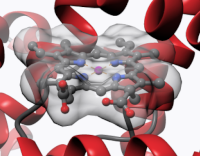Biophysics Colab
Biophysics Colab is a collaboration of biophysicists who are working in partnership with eLife to improve the way in which original research is evaluated. We aim to drive forward the principles of open science by providing an equitable, inclusive, and transparent environment for peer review. Our ambition is to facilitate a publishing ecosystem in which the significance of research is recognised independently of publication venue.
Featured lists
-
Reading List
Articles that are being read by Biophysics Colab.
Curated by Biophysics Colab

-
Curated Preprints
Articles that have been curated by Biophysics Colab.
Curated by Biophysics Colab
Latest preprint reviews
-
Structural and mechanistic analysis of a tripartite ATP-independent periplasmic TRAP transporter
This article has 17 authors:This article has been curated by 1 group:Reviewed by Biophysics Colab
-
Calcineurin-fusion facilitates cryo-EM structure determination of a Family A GPCR
This article has 8 authors:Reviewed by Biophysics Colab
-
Combinatorial G x G x E CRISPR screening and functional analysis highlights SLC25A39 in mitochondrial GSH transport
This article has 11 authors:Reviewed by Biophysics Colab
-
Structural basis of ion – substrate coupling in the Na+-dependent dicarboxylate transporter VcINDY
This article has 6 authors:This article has been curated by 1 group:Reviewed by Biophysics Colab
-
Chloride ions evoke taste sensations by binding to the extracellular ligand-binding domain of sweet/umami taste receptors
This article has 7 authors:This article has been curated by 2 groups:Reviewed by eLife, Biophysics Colab
-
The dopamine transporter antiports potassium to increase the uptake of dopamine
This article has 10 authors:Reviewed by Biophysics Colab
-
TMEM16 scramblases thin the membrane to enable lipid scrambling
This article has 9 authors:This article has been curated by 1 group:Reviewed by Biophysics Colab
-
The versatile regulation of K2P channels by polyanionic lipids of the phosphoinositide and fatty acid metabolism
This article has 6 authors:Reviewed by Biophysics Colab
-
Fast ATP-dependent Subunit Rotation in Reconstituted F o F 1 -ATP Synthase Trapped in Solution
This article has 2 authors:This article has been curated by 1 group:Reviewed by Biophysics Colab
-
Mechanism of CFTR correction by type I folding correctors
This article has 2 authors:This article has been curated by 1 group:Reviewed by Biophysics Colab
